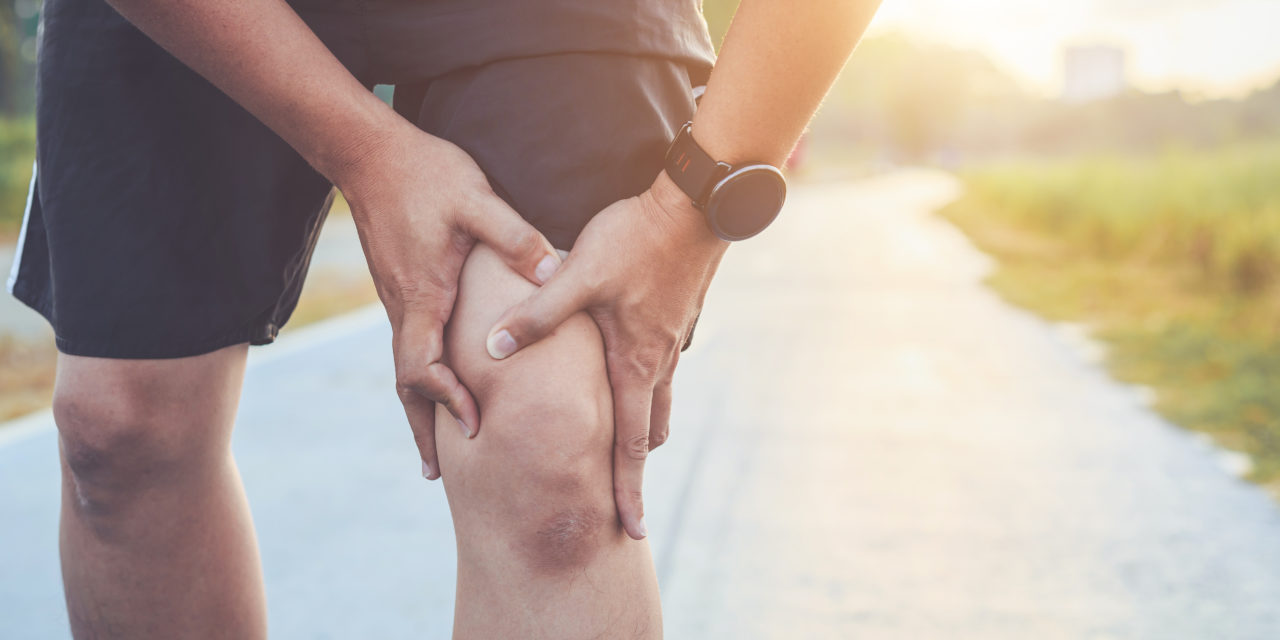Have you ever been on a run and started to feel pain on the outside of your knee? Then the further you ran, the sharper the pain became until you reached a point that you either couldn’t continue to run or you felt like you wanted to avoid bending the knee? If so, you have experienced Iliotibial band syndrome (ITBS). You would also know both how sharp the pain can be and how frustrating the injury can be to manage at times.
ITBS is one of the most common overuse injuries in running, occurring in approximately 12% of runners. It is more common in male runners. It also occurs in cyclists. Generally, the pain recurs at the same distance or time running. It may be exacerbated during downhill running, running on a banked surface, or on a narrow trail. It is usually felt right before or after the foot hits the ground during running. Like other overuse running injuries, it is related to training errors and is often associated with a recent increase in training volume.
If the tissues are highly irritated there may be associated swelling. Once the iliotibial band (ITB) is irritated, you may experience pain with normal activities such as walking, ascending and descending stairs, and squatting. While there are other possible diagnoses for pain on the outside of the knee, generally ITBS can be diagnosed based on the history and examination without an extensive medical workup being required.
The ITB is a band of dense fibrous connective tissue (fascia) which passes from the outside of your hip down across the outside of the knee. Originally the cause of the pain was thought to be friction, as the ITB repeatedly crosses the knee. Recent research debates this as the band has been shown to have attachments at the knee; rather, it points to compression being the contributing factor. Regardless of the mechanism, the pain occurs when the highly sensitive tissues that are dense with nerves such as a bursa or fat pad are irritated under the ITB. This irritation occurs in what is termed the “impingement zone” which is when the knee bends between 25 to 35 degrees of flexion. This compression is also thought to be associated with decreased control of rotation of the lower extremity as it rolls in while your foot is on the ground. This loss of control may be exacerbated when the runner becomes fatigued.
Initial management of acute ITBS involves a period to calm down the irritated tissues with the use of ice, anti-inflammatory medication, and activity modification. Generally, you will need to cease running for a short period.
Many runners stop all aerobic training when they can’t run. Instead, continue to cross-train commencing with an activity that does not reproduce the symptoms, such as swimming. Then progress to the elliptical machine or bike as long as symptoms are not reproduced. If the ITB symptoms are aggravated on the bicycle, try lowering your seat height such that your knee avoids the impingement zone.
Once the symptoms settle down, the next step is a modification of training. Generally, ITB is not the type of running injury you can “run through.” Work out the distance or time you can run before the onset of symptoms. Begin at this “threshold” while you perform cross-training and rehab while gradually and systematically building back mileage. Avoid downhill running as it involves less knee flexion and the knee is more likely to fall in the impingement zone. Conversely, you may try walking initially and then progressing to running on a steep incline of a treadmill, during which your knee will be bent further and you may avoid the impingement zone.
The best evidence in the rehabilitation of ITBS is to strengthen the muscles in your hip, particularly the muscles on the outside of your hip known as the hip abductors. In one study 24 runners with ITBS performed a hip strengthening program for 6 weeks, and at the end of this period, 22 were running pain-free. Strengthening exercises should be progressed to help control the positioning of the knee when you return to running, which could prevent the injury from recurring.
There is also some good evidence for modifying your running form if indicated. One strategy that is often effective is moving your feet apart slightly while running and widening your stance so that there is less stress on the outside of the knee. We have successfully retrained this in our runners either outside using a line on a track as a cue or on a treadmill with mirror feedback.
PT and self-management of ITBS historically included “rolling” the ITB, with the goal of lengthening the ITB and taking tension out of the band. Again, research has since shown that the ITB is an extremely strong structure and that it is highly unlikely that this works as intended.
Although it can be a challenging injury, remember that ITBS is a common running injury primarily related to overload and irritated tissues due to training errors. With a systematic approach to rehabilitation and a graduated return to running, you should be back achieving your goals soon.
Mark Temme, P.T. is the Director of Rehabilitation at OrthoSouth (Briarcrest) with a clinical specialty in managing running injuries and lower extremity tendinopathies. He is an avid runner and triathlete and member of the Los Locos Racing Team. For more information or to schedule an appointment visit Orthosouth.org.







